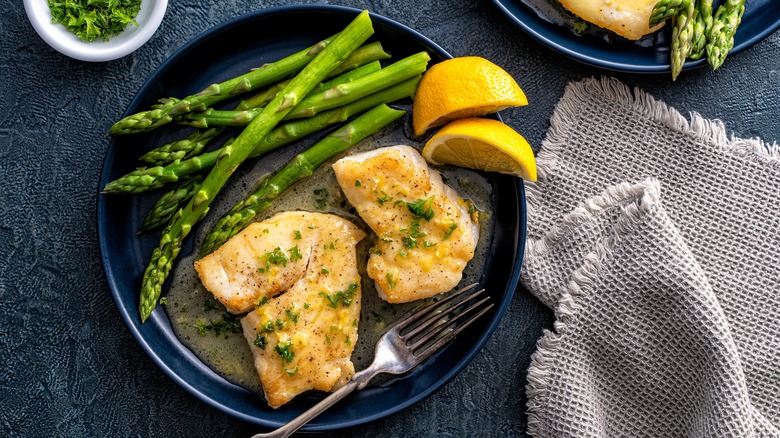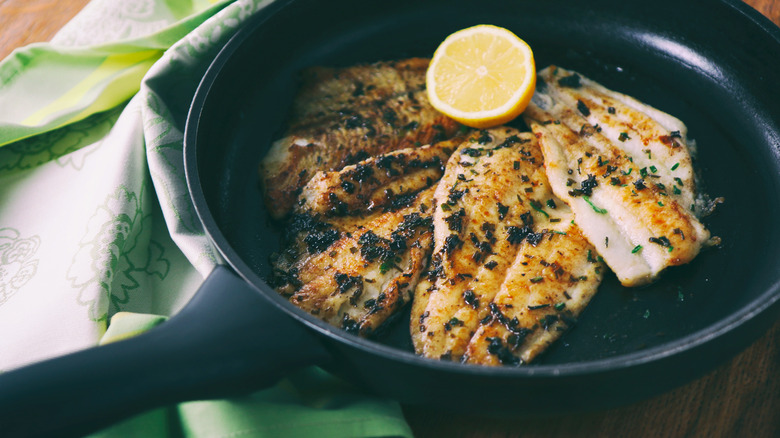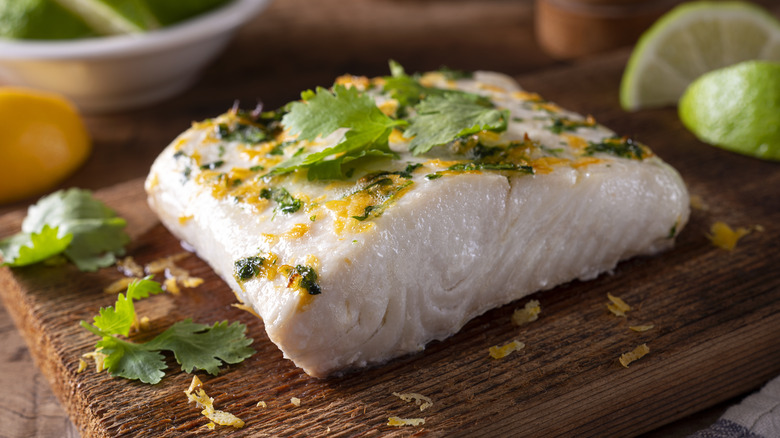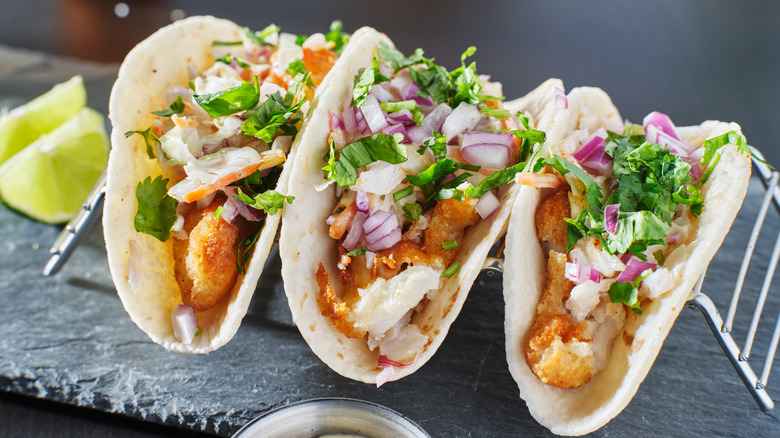The Big Differences Between Halibut And Flounder
Quite possibly the two most common fish to come across on a menu year-round, halibut and flounder are our beloved little finned friends. They're both tasty, not too "fishy," and a solid choice for a seafood dinner on any restaurant menu.
Many may not realize that flounder is not an individual type of fish, it is a general term for a group of flatfish that includes different species — more than 200 can be found in the Atlantic and Pacific Oceans.
Flatfish are bottom-dwellers and live along the ocean floor. They are wide and flat with both eyes on one side of their body and range in color from tan to reddish, and from white to mottled. ("Finding Nemo" was a bit inaccurate in this aspect.) And who is one of the most popular members of this group? Halibut.
So a halibut is a flounder, and both are flatfish, but not all flounder is halibut. Confused yet? Let's break down their main differences and then get down to what really matters: Are they swappable in recipes? And which one is best suited for different types of dishes?
Flounder are pretty flat
What adds to the confusion between a flounder and halibut is that there are three types of flatfish that are referred to as flounder: winter flounder, summer flounder, and yellowtail flounder. (No, that's not the same fish that your favorite sushi order is made from.) And there are two types of flounder called halibut: Pacific halibut and Atlantic halibut.
Flounder are found from the Gulf of Mexico up to the Gulf of Maine, around Mexico, and up the entire West Coast of the United States. Basically, wherever there's a coastline, there is flounder.
They are white-fleshed fish that usually weigh up to 22 pounds. They swim along the bottom on their side and both of their eyes can be found on one side of their head. Their eyes are able to move in separate directions simultaneously. As with just about all white fish, their meat has a mild flavor and does not taste fishy. Their flesh is flaky and slightly sweet. The larger species have a firmer texture whereas the smaller ones are more on the delicate side.
So how does halibut differ from other flounder?
Halibut is a huge fish
Halibut differ from flounder in about a few main areas. Physically, they contrast in their size and body shape, as well as their teeth, eyes, and tail. While no flounder has ever weighed above 30 pounds, halibut can sometimes clock in at over 400 pounds. They can be up to 20 times the size of other flatfish.
Shape-wise, a flounder is rounder while the halibut takes on more of an angular, kite shape. They have concave tails with pointy tips compared to the flounder's rounded, fan-shaped tail. When it comes to that fun feature of eyes on both sides of the head, with flounder, you can find them on either the left or right side whereas the halibut's eyes fall on the right.
Halibut also live farther north than other flounder. Pacific halibut are found from Alaska through the northwestern United States. Atlantic halibut is found near Cape Cod and all the way up to Greenland and over to Europe. In addition to Atlantic and Pacific halibut, there is also a third type of halibut, Greenland halibut, that is commonly called turbot.
Can the two be swapped?
Now that we've cleared that up, the question remains — are fish labeled "flounder" and those labeled "halibut" interchangeable? If you're looking for light, white, mild fish to enjoy at a restaurant, it's a safe bet to order either. However, if you're whipping up a fish dinner at home, there are some things to take into consideration.
From a taste perspective, they're both mild and very similar. A halibut fillet is thicker and firmer, given the fish's size. It has more of a "steak" quality to it — you sink your fork into it. Flounder, on the other hand, is delicate and flaky, and the fillets are much thinner. Although neither fish are considered fatty, halibut is leaner and less oily than other flounder.
The cooking method is certainly a factor that comes into play. The firm, thick fillets of halibut make it perfect for holding its own on a grill or frying. Flounder is perfect for baking and frying, but won't do too well on the grill grates. Additionally, flounder is also fit as stuffing, for baking on a sheet pan, dredging for a frittata, or flaking for a taco. Halibut is suitable for a coating of blackening seasoning and a whirl on the grill, searing in butter, or frying for a sandwich.
Ultimately, for the most part, they are a decent swap-in. Just keep in mind the cooking method and the "heartiness" you seek in your end product.



